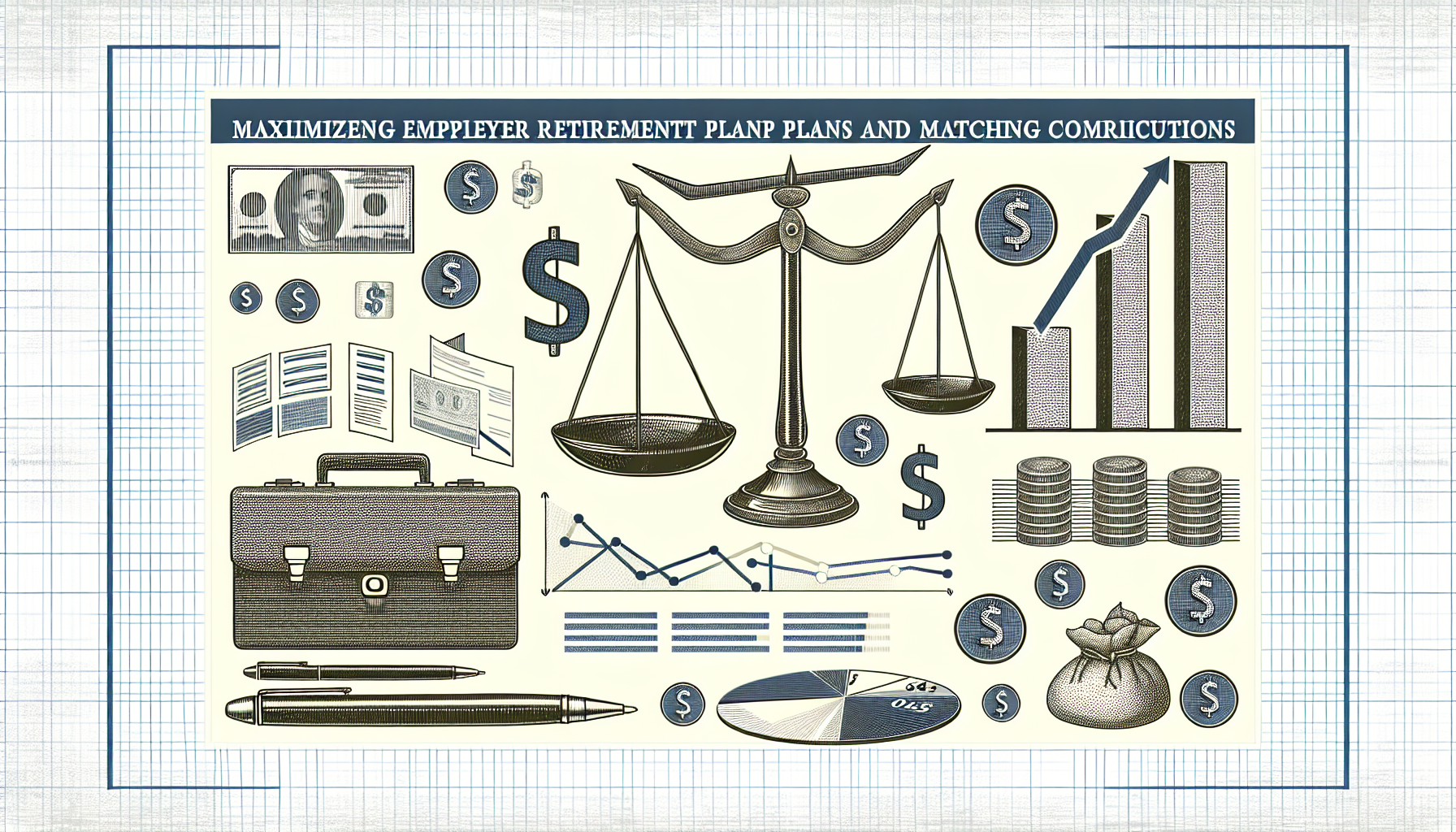This article provides strategies for early and effective retirement planning, emphasizing the importance of saving wisely for the future.

The timeliness of saving for retirement plays a pivotal role in determining the overall financial well-being of an individual in their later years. One significant factor that underscores the necessity of early retirement planning is the concept of compound interest. This financial principle allows savings to grow exponentially over time, as interest earned on an investment also earns interest itself. The earlier one begins to invest, the more substantial the returns can become, creating a favorable trajectory toward a comfortable retirement.
Time, indeed, is an invaluable asset in the realm of retirement savings. For instance, consistently contributing to a retirement account during one’s 20s and 30s can result in a far greater accumulation of wealth by the time an individual reaches retirement age than if they were to start saving in their 40s or 50s. The difference in the potential retirement fund can be dramatic when factoring in not only individual contributions but also the compounding effects of investment returns over time. Thus, understanding the intricacies of time and investments is crucial for anyone considering retirement savings.
Additionally, the implications of delaying retirement savings extend beyond mere numbers. A lack of financial preparedness can engender significant emotional stress and impact lifestyle choices during retirement. The assurance of financial security allows retirees to explore various lifestyle avenues, travel, volunteer, or pursue hobbies without the burden of financial anxiety. When individuals proactively create a robust retirement plan, they set the groundwork for not only a stable financial future but also a fulfilling life beyond their working years. Therefore, recognizing the importance of initiating retirement savings early cannot be overstated; it is a foundational step toward achieving both financial independence and emotional well-being in retirement.

Establishing clear and achievable retirement goals is a fundamental step in creating a successful retirement plan. Start by envisioning the lifestyle you desire after leaving the workforce. Consider critical factors such as travel ambitions, hobbies you wish to pursue, and your preferred living arrangements. This vision sets a comprehensive framework for what your retirement could look like and represents a tangible target to aim for.
Travel aspirations can significantly influence your retirement budget. For instance, if your goal is to explore different countries extensively, understanding the financial implications of international travel is crucial. Similarly, think about hobbies that may require investment, such as gardening, golfing, or art classes. Each chosen activity presents unique costs that should be factored into your retirement saving strategy.
Living arrangements also play a vital role in your retirement plan. Whether you wish to downsize, move to a retirement community, or stay in your current home, each option carries distinct financial responsibilities. It’s important to evaluate not only potential costs associated with these choices but also any lifestyle changes they entail. By quantifying these goals in terms of necessary savings, you lay a solid foundation for your financial strategy.
Moreover, personal circumstances such as health, family obligations, or economic factors should influence how you adjust these goals over time. Regularly reassessing your aspirations and aligning them with current realities will aid in staying on track with your retirement savings. Setting specific, measurable, achievable, relevant, and time-bound (SMART) goals will enable you to effectively gauge your progress towards a fulfilling post-retirement life. By being precise about your objectives, you can better navigate the complexities of retirement planning and ensure that you meet your financial and personal aspirations.
Retirement planning is a critical aspect of financial security, and understanding the available retirement accounts is instrumental in achieving long-term goals. Among the most popular options are Traditional Individual Retirement Accounts (IRAs) and Roth IRAs. Each of these accounts offers distinct features, making them suitable for different financial circumstances and retirement objectives.
A Traditional IRA allows individuals to contribute pre-tax income, which can lead to significant tax deductions in the year contributions are made. The contributions grow tax-deferred until withdrawal, typically during retirement when individuals may be in a lower tax bracket. For 2023, the maximum contribution limit for both Traditional and Roth IRAs is $6,500, or $7,500 for individuals age 50 or older, enabling catch-up contributions.
On the other hand, Roth IRAs are funded with after-tax income. The key advantage lies in their tax-free growth and withdrawals, provided specific conditions are met. Contributions can be withdrawn at any time without penalties, offering flexibility for account holders. However, income limitations apply for eligibility to contribute, making contributions impossible for higher earners. Specifically, for 2023, individuals with a modified adjusted gross income of $144,000 or more are phased out of eligibility.
When choosing between a Traditional IRA and a Roth IRA, it is crucial to consider current and projected future income, tax rates, and retirement needs. A Traditional IRA may be beneficial for those expecting to be in a lower tax bracket during retirement, while a Roth IRA may suit individuals projecting higher income levels or desiring more access to funds without penalties. Thorough analysis of personal financial circumstances and goals is essential to make an informed decision, ensuring that the chosen retirement account aligns with one’s long-term plans.
In an era where financial security is paramount, retirement calculators serve as essential tools for individuals seeking to make informed decisions regarding their savings strategies. These calculators can provide a conceptual framework to help users estimate how much money they need to accumulate for a comfortable retirement, taking into account various factors such as current savings, expected annual contributions, and anticipated retirement expenses.
The primary function of a retirement calculator is to project the total amount needed to sustain one’s lifestyle in retirement. Users typically input their current age, expected retirement age, current retirement savings, and monthly or annual savings contributions. Some calculators also allow users to input an expected rate of return on their investments and consider inflation, which can significantly affect long-term savings goals. By integrating these variables, users can gain insights into how much they need to adjust their savings habits to reach their retirement objectives.
It is important to consider several key factors while using retirement calculators. First, evaluation of lifestyle expectations during retirement should be prioritized; projected expenses for healthcare, housing, leisure activities, and travel can vary widely among individuals. Additionally, understanding one’s life expectancy is vital, as it will influence how long retirement funds must last. Furthermore, users should take advantage of sensitivity analyses that some calculators offer, allowing them to see how changes in savings rates or investment returns might impact their overall retirement savings.
As individuals assess their current financial standing, utilizing retirement calculators can provide clarity and direction. Adjusting contributions based on these estimations is crucial as collective insights gained from this exercise can facilitate informed decisions that enhance long-term financial well-being. In conclusion, retirement calculators can be invaluable in guiding individuals towards effective savings planning, ensuring they are prepared for their future financial needs.

Employer-sponsored retirement plans, particularly 401(k) accounts, play a pivotal role in retirement savings strategies. These plans are designed to provide employees with a convenient way to save, invest, and ultimately grow their retirement funds. To fully capitalize on the benefits of these plans, employees should focus on maximizing their contributions, especially when employer matching contributions are available.
Employer matching contributions are one of the most compelling incentives for saving for retirement. Typically, an employer will match a certain percentage of an employee’s contributions, which can significantly boost the overall savings. For instance, if an employee contributes 5% of their salary and their employer matches 50% of that, the employee effectively receives an additional 2.5% of their salary in their retirement account. Over time, this can lead to substantial growth in retirement savings.
As a strategy, employees should aim to contribute at least the minimum amount necessary to receive the full employer match. This is often referred to as “free money,” and failing to take advantage of it is akin to leaving potential income on the table. Furthermore, it is advisable to increase contributions progressively over time—especially when receiving salary increases—to enhance overall retirement savings without feeling the pinch in current take-home pay.
For example, consider a case where an employee starts with a salary of $50,000 and contributes 5% to their 401(k). After a few years, as their salary increases to $70,000, they should aim to raise their contribution percentage incrementally. Such a practice not only optimizes the employer’s matching contributions but also cultivates a disciplined savings habit. Over a 30-year career, even modest annual increases can compound significantly, leading to a more secure retirement.
In conclusion, maximizing employer-sponsored retirement plans and matching contributions is a strategic approach to retirement planning that can yield impressive long-term results. By routinely assessing and adjusting contribution levels, employees can enhance their financial stability in preparation for retirement.
Dollar-cost averaging (DCA) is a powerful investment strategy that involves making regular, consistent contributions to a retirement fund, regardless of the market conditions. This methodology allows investors to purchase more shares when prices are low and fewer shares when prices are high, ultimately mitigating the impacts of market volatility. By adopting a disciplined approach to investing, individuals can accumulate wealth over time in a less stressful manner compared to trying to time the market.
One of the primary benefits of dollar-cost averaging is the reduction of emotional stress associated with fluctuating market conditions. It can be challenging to remain committed to a savings regimen when economic circumstances appear unfavorable. However, by committing to regular contributions, investors can develop a strong saving habit that ensures consistent growth of their retirement funds. Implementing a DCA strategy helps individuals invest regardless of market perceptions, fostering a long-term perspective essential for retirement savings.
To incorporate dollar-cost averaging into your retirement planning, automated contributions are essential. Many retirement accounts, including 401(k)s and IRAs, allow for automatic payroll deductions or direct deposits. This means that a predetermined amount can be set aside each pay period without any additional effort. By establishing automatic contributions, individuals not only simplify the investment process but also cultivate the habit of saving routinely. As part of your strategy, consider reviewing your contributions periodically—annual raises or increased savings can enhance your overall retirement fund without necessitating significant lifestyle changes.
In conclusion, the practice of dollar-cost averaging is a valuable strategy for retirement savings that focuses on the benefits of consistent contributions. By harnessing this approach, investors can navigate market fluctuations with greater ease and establish a sustainable savings habit vital for a secure financial future.
Building an effective investment strategy for retirement is paramount for achieving long-term financial security. The first step in this process is understanding asset allocation, which refers to distributing investments across various asset classes, such as stocks, bonds, and cash. This allocation should align with your risk tolerance and investment horizon. Younger investors, for instance, may prefer a higher allocation in stocks given the potential for growth over a long period, while those nearing retirement often shift towards safer investments like bonds to preserve capital.
Diversification is another crucial principle in developing a robust retirement investment strategy. By diversifying investments across different sectors, industries, and geographies, you can reduce the overall risk of your portfolio. A well-diversified portfolio can help mitigate the impact of poor performance in any one area. For example, if the stock market experiences volatility, bonds may provide stability and income, helping to balance your portfolio’s returns.
As you approach retirement, it becomes essential to regularly rebalance your portfolio to ensure it continues to meet your financial goals. Rebalancing involves adjusting your asset allocation back to your target mix to maintain the desired risk level. This might mean selling off some assets that have performed well and reallocating those funds into underperforming areas, ensuring that your portfolio does not become overly exposed to any single asset or sector.
Ultimately, crafting an investment strategy requires a personalized approach that factors in your financial goals, risk tolerance, and time horizon. Regular reviews and adjustments will be vital as market conditions change and as you move closer to retirement. By employing these strategies, you can significantly enhance your chances of achieving a comfortable retirement.

An effective retirement plan is not a static document, but rather a dynamic strategy that evolves with your personal circumstances and the broader economic landscape. Regularly reviewing and adjusting your retirement plan is essential for ensuring that your financial goals remain realistic and achievable. Factors such as changes in income, unexpected life events, and shifts in market conditions necessitate a proactive approach to retirement planning.
To begin with, schedule regular checkpoints to evaluate the performance of your retirement accounts and savings strategies. A quarterly or biannual review can help you assess whether your investments are aligned with your retirement objectives. Consider what financial milestones you have achieved and if your current savings rate is sufficient to meet your goals. If significant life changes—such as a new job, marriage, or the birth of a child—occur, it is crucial to revisit your plan to accommodate these factors.
Moreover, monitor economic indicators and market conditions that could impact your retirement portfolio, such as interest rates and inflation. These shifts may require adjustments to your investment strategy to protect your savings against potential downturns. It is also prudent to reassess your risk tolerance, especially as you approach retirement age; many people prefer to shift towards more conservative investments as they near their target retirement date.
Furthermore, engaging with a financial advisor can provide valuable insights during your review process. An advisor can help identify areas for adjustment, provide advice tailored to your unique financial situation, and offer strategies for optimizing your contributions. By implementing regular reviews and remaining adaptable, you can enhance your confidence in achieving a financially secure retirement.
Retirement planning is not merely a theoretical exercise; it requires proactive steps to translate your financial goals into reality. As you develop your strategy for retirement savings, the most critical aspect is to take actionable steps that will ensure a secure financial future. Here are key measures you can implement immediately to bolster your retirement plan.
First and foremost, establish a dedicated retirement savings account. This can be through an Individual Retirement Account (IRA), a 401(k), or another retirement vehicle suited to your needs. Setting up automatic contributions ensures that you are consistently investing in your future without having to make frequent decisions about your budget. This automated approach not only simplifies the process but serves as a disciplined approach to saving.
Next, create a detailed savings plan that outlines your financial goals. It is essential to have a clear roadmap that includes how much you anticipate needing for retirement and the timeframe for reaching those savings targets. Assess your current expenses and identify areas where you can cut back. By redirecting these savings towards your retirement fund, you can accelerate your progress toward financial independence.
Equally important is educating yourself about investment options. Familiarize yourself with different asset classes, such as stocks, bonds, and mutual funds. Understanding the risk and return associated with each can help you make informed decisions that align with your retirement objectives. Consider speaking with a financial advisor to guide you through this process and to tailor your investments to your unique situation.
Finally, remain committed and disciplined in your approach to saving for retirement. Understand that every contribution counts, regardless of size, and that the earlier you start, the more time your investments have to grow. By taking these actionable steps today, you are taking charge of your financial future, ensuring that you are better prepared for retirement. Remember, it’s never too early to start building your retirement fund.
Find Scholarships Offered by Countries Worldwide for Your Academic Goals.
Chose where you want to study, and we will let you know with more updates.